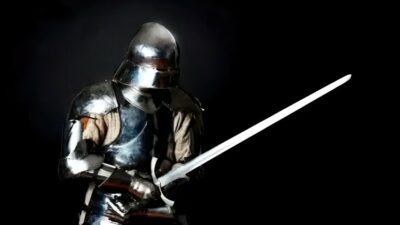Rapier vs Longsword: Dexterity vs Strength – Or Is It?

The rapier and longsword are iconic European blades that are popular in modern HEMA (Historical European Martial Arts) training. Since they are vastly different with both excelling in battle, there is often a discussion of which would win in a duel.
In this article, we explore their characteristics and design differences, historical significance, combat abilities, and how each fares in various situations.
KEY TAKEAWAYS:
- The longsword, a two-handed battlefield weapon, was replaced by the one-handed rapier, used in civilian duels, as combat styles evolved and armor use declined.
- The longsword’s wide blade is made for slashing and thrusting, providing power. In contrast, the rapier’s thin, straight blade is better for quick, precise thrusts.
- Although the rapier excels in reach, speed, and precision in rule-based duels, the longsword’s versatility and strength give it an edge in a duel to the death.
Terms, Characteristics, and Design Differences
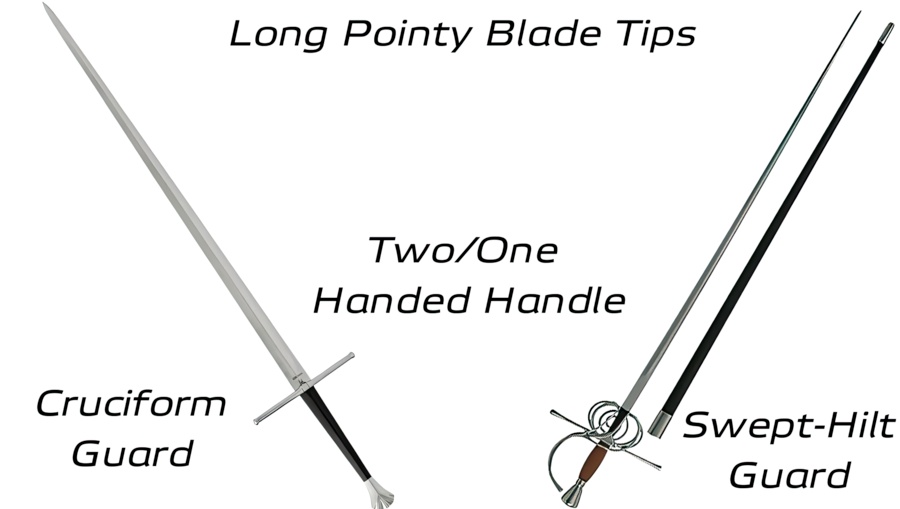
The rapier had many different names throughout history. Today, the term “rapier” has persisted due to the 15th-century origin “espada ropera”. This term translates to “dress sword”, referring to a grand blade with a complex hilt carried in everyday life that could be used for self-defense or duels of honor.
Comparatively, the longsword is a term used to describe the swords longer than the average knightly or Arming sword of the Middle Ages. Today, it is mainly used to refer to a two-handed sword.
Blade
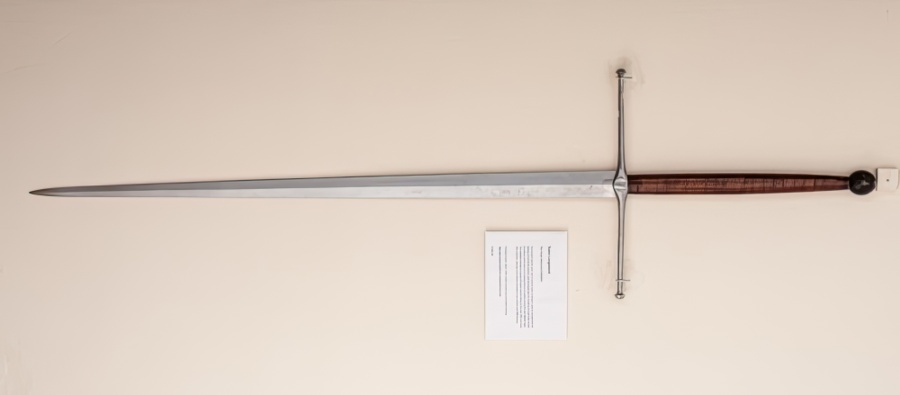
The blades of both the longsword and rapier are straight and double-edged. While they differ in terms of design based on when it was produced from the 16th to the 17 centuries, both have pointy and tapering tips designed for thrusts.
Although the rapier cuts effectively, its main advantage lies in its thrusting and penetrating strength. It usually features an unsharpened ricasso and a long central fuller to decrease its weight and improve flexibility. A rapier’s blade length varies based on the user’s height, averaging around the 41-inch (105 cm) mark with some exceptions.
For the longsword, it is highly effective for powerful slashes and deep thrusts due to its pointy tip made to find gaps in armor. It can also feature a fuller in its central line, but it is not a defining trait. Alongsword’s blade is around 45 inches (115 cm), not as big as a greatsword, but still a fairly long blade.
Hilt
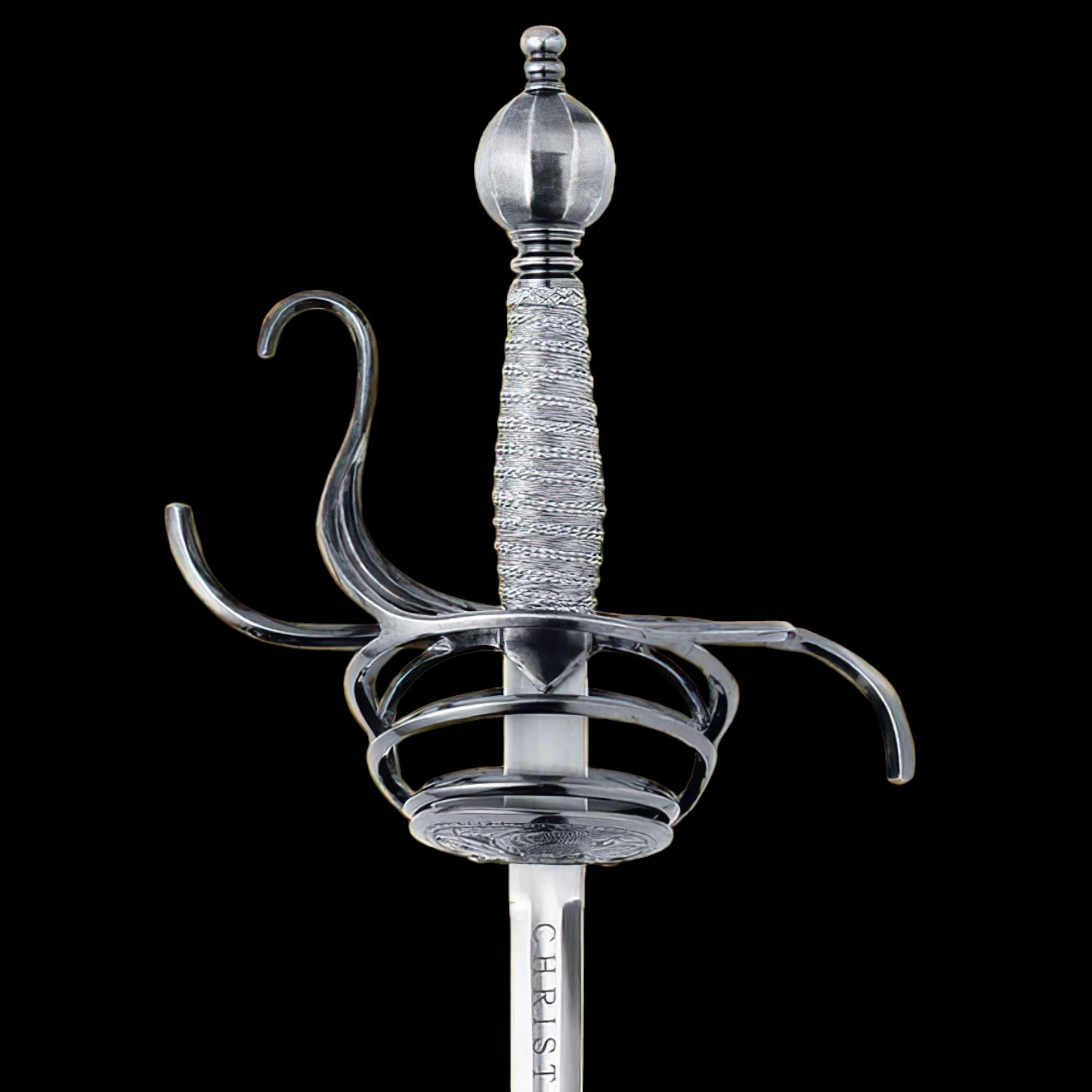
The rapier has a one-handed handle with a fairly large pommel behind and a guard in front. Measuring around 6 inches (15cm) long, this complex hilt comes in varying designs such as the cup, basket, ring finger guards, and many more with the swept-hilt being the most popular. It offered substantial protection against cutting and sometimes thrusting attacks.
For the longsword’s two-handed hilt, it has a tapering handle with a large pommel and a ridge in the middle. The simple cruciform guard offered excellent protection to its wielder’s hands without limiting their hands’ range of movement. The longsword’s handle measures around 10 inches (25cm).
Size and Weight

Both the longsword and rapier were fairly large blades with a practical weight. They excelled and were favored due to their reach advantage over a short sword,
The rapier’s varying design resulted in the sword being available in different lengths and sizes. A typical rapier ranges from 43 to 55 inches (110 to 140 cm) with an average weight of 2.2 to 2.9 lbs (1 to 1.3 kg).
Although featuring shorter designs seen in hand-and-a-half or bastard sword variants, the longsword is generally around 47 to 57 inches (120 to 145 cm) with an average weight of 2.65 to 3.3 lbs (1.2 to 1.5 kg).
History and Significance
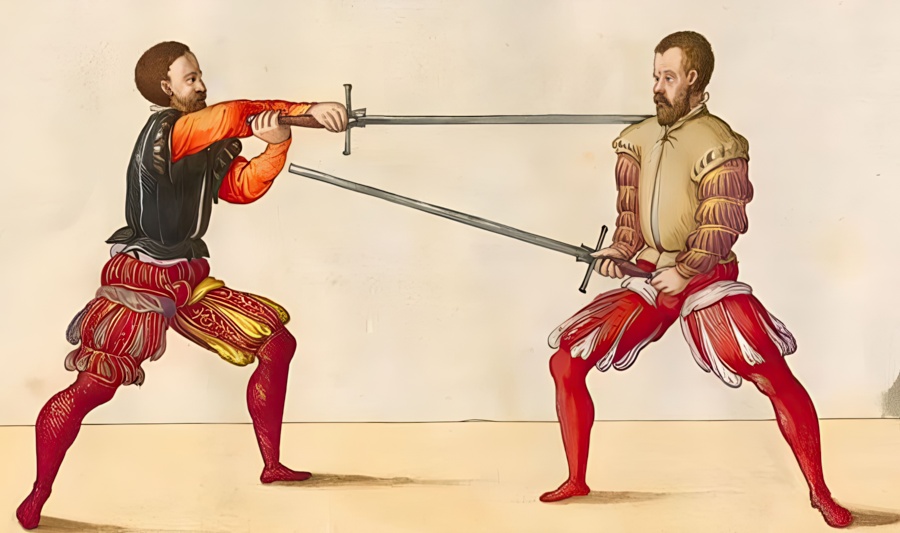
The longsword and rapier are double-edged weapons of the Middle Ages and Renaissance Europe that coexisted for a short period during the 16th to early 17th century. Both the longsword and rapier were strapped to the wielders’ waists. Despite some law restrictions during the 15th and 14th centuries, it became socially acceptable in the 16th century.
The longsword is available in various blade types and designs based on previous arming swords and hand-and-a-half variants. Today, this type of sword we now recognize as a “longsword” is the 15th and 16th century 55-inch (140 cm) cruciform hilted blade with a light taper and pointy tip.
The rapier, having evolved from the earlier sidesword, sometimes had a design known as “war rapier” that emphasized on stronger cutting and thrusting abilities during the 16th century. The rapier’s design focused on thrusting only developed during the 17th century.
As the use of firearms increased, armor and swords became less relevant. This resulted in one-handed rapiers with longer and slimmer blades that were ideal against unarmored opponents, eventually replacing the longsword entirely. With time, the rapier was replaced by the smallsword and curved single-edged saber due to its use in cavalry units.
Today, the rapier and longsword are the most significant European blades in HEMA. They remain relevant as their versatility and differences in swordsmanship are unique and interesting for practitioners.
Combat Preference
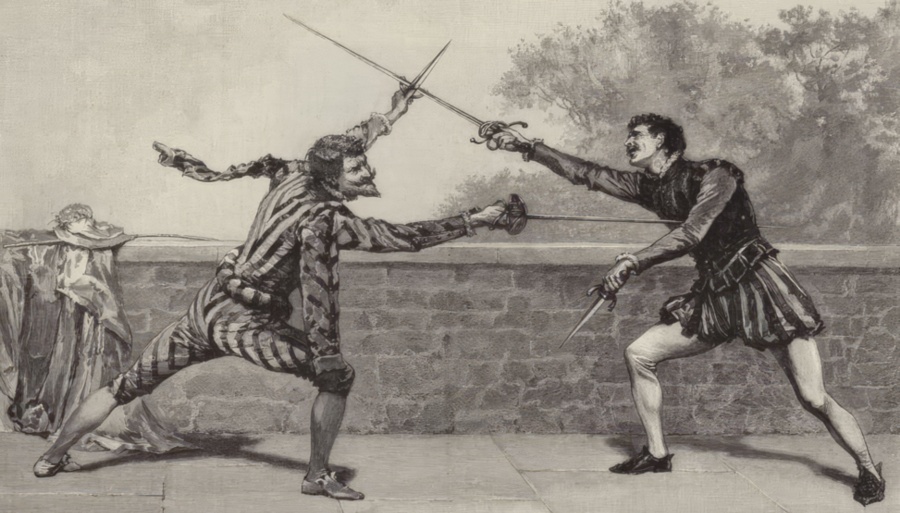
The longsword is a powerful multi-functional two-handed double-edged sword made for deep penetrating thrusts and quick slashes. Besides half-swording where the blade is gripped and used as a dagger, other techniques include melee pommel bashing, grappling, and choking both armored and unarmored opponents. While both the longsword and rapier depend on dexterity to overcome an enemy, the longsword has an advantage in strength and cutting power due to its wider blade and ability to produce more mass due to its two-handed handle.
The rapier is a one-handed double-edged sword designed as a cutting and thrusting weapon. Offering an advantage in terms of speed and range, it can be coupled with a buckler or dagger as an off-hand accessory. Although lighter than the longsword, it is important to note that it is a one-handed sword and therefore, offers the same speed. However, some versions of the Italian rapier blade have a longer reach.
When comparing the two swords, a typical rapier fighter would rely heavily on the duelling rules their opponent has to follow, such as being unarmored or not grabbing the blade with an armored glove. Meanwhile, the longsword’s versatility gives its wielder more freedom in battle, making it ideal for one-on-one duels or sparring.

